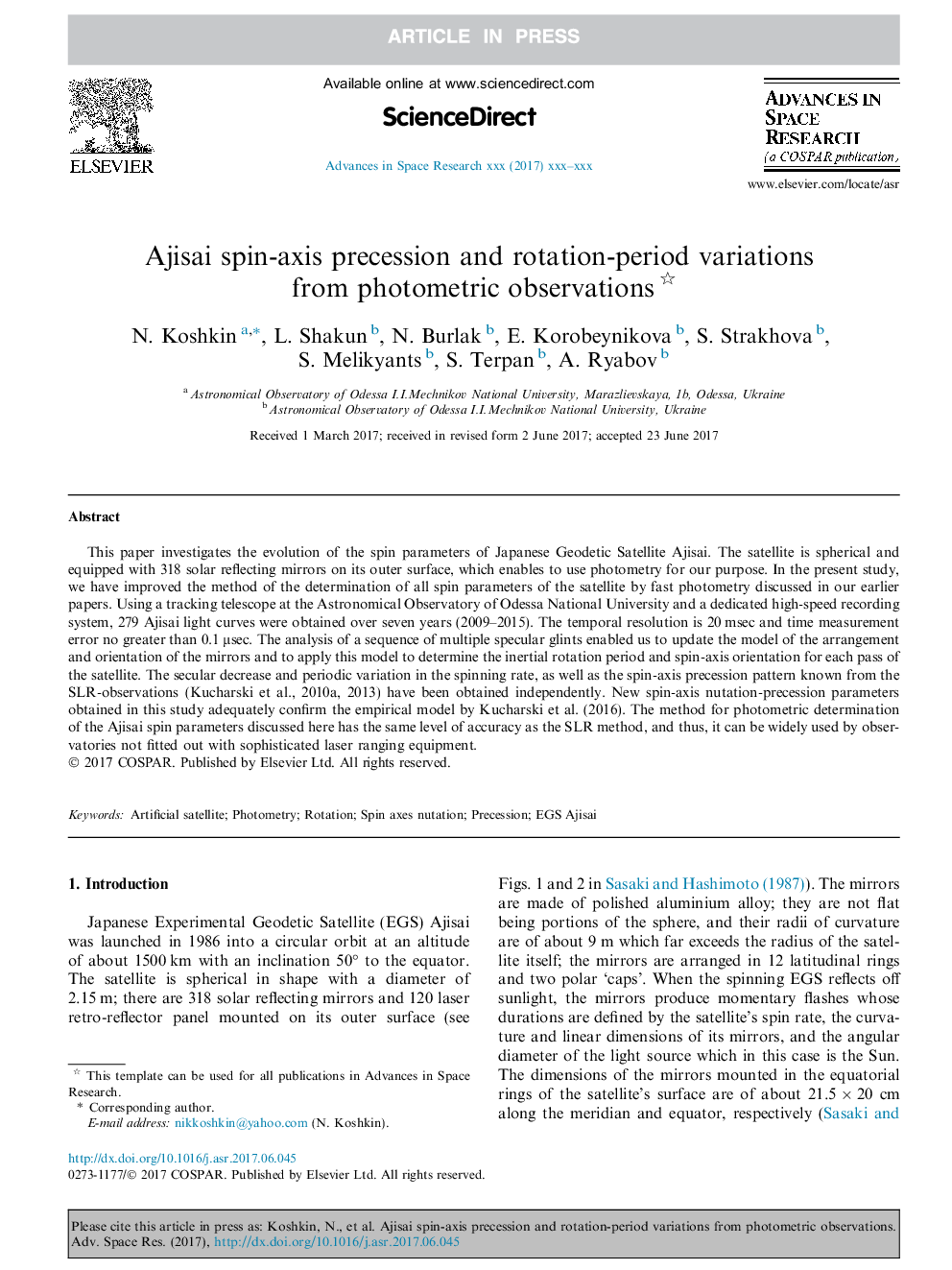| Article ID | Journal | Published Year | Pages | File Type |
|---|---|---|---|---|
| 5486485 | Advances in Space Research | 2017 | 11 Pages |
Abstract
This paper investigates the evolution of the spin parameters of Japanese Geodetic Satellite Ajisai. The satellite is spherical and equipped with 318 solar reflecting mirrors on its outer surface, which enables to use photometry for our purpose. In the present study, we have improved the method of the determination of all spin parameters of the satellite by fast photometry discussed in our earlier papers. Using a tracking telescope at the Astronomical Observatory of Odessa National University and a dedicated high-speed recording system, 279 Ajisai light curves were obtained over seven years (2009-2015). The temporal resolution is 20 msec and time measurement error no greater than 0.1 μsec. The analysis of a sequence of multiple specular glints enabled us to update the model of the arrangement and orientation of the mirrors and to apply this model to determine the inertial rotation period and spin-axis orientation for each pass of the satellite. The secular decrease and periodic variation in the spinning rate, as well as the spin-axis precession pattern known from the SLR-observations (Kucharski et al., 2010a, 2013) have been obtained independently. New spin-axis nutation-precession parameters obtained in this study adequately confirm the empirical model by Kucharski et al. (2016). The method for photometric determination of the Ajisai spin parameters discussed here has the same level of accuracy as the SLR method, and thus, it can be widely used by observatories not fitted out with sophisticated laser ranging equipment.
Related Topics
Physical Sciences and Engineering
Earth and Planetary Sciences
Space and Planetary Science
Authors
N. Koshkin, L. Shakun, N. Burlak, E. Korobeynikova, S. Strakhova, S. Melikyants, S. Terpan, A. Ryabov,
